delicious thin steak recipes and enjoy a quick, tender meal tonight!
Thin Steak Recipes And Enjoy A Quick
Are you tired of sacrificing flavor for convenience on busy weeknights? You don’t have to! With thin cuts of beef, you can enjoy a protein-packed dinner in no time.
Steaks less than 1″ thick are perfect for those who want to savor a tender meal without the wait. Whether it’s an Asian-inspired stir-fry or a classic American favorite, these versatile cuts can be transformed into countless dishes.
Cooking a delicious dinner is now within your reach. In this comprehensive guide, you’ll discover how to select the right cuts, master cooking techniques, and elevate your dishes to restaurant quality.
Table of Contents
Key Takeaways
- Quick and tender meals with thin cuts of beef
- Versatile cooking options across various cuisines
- Mastering cooking techniques for flavorful results
- Essential equipment and preparation techniques
- Perfect pairings to elevate your dishes
Understanding Thin Steaks: Types and Cuts
For those looking to prepare a delicious beef dinner in minutes, thin steaks are ideal. Thin steaks are not just a convenience; they offer a range of benefits that make them perfect for various meals.
What Qualifies as a “Thin” Steak
A thin steak is typically considered to be about 1/4 inch to 1/2 inch thick. This thickness allows for quick cooking, making it possible to have a tender and flavorful steak on the table in under 15 minutes.
Popular Thin Steak Cuts
Some popular cuts of thin steaks include sirloin, ribeye, and flank steak. These cuts are not only flavorful but also versatile, allowing you to pair them with a variety of ingredients for a satisfying dinner
Why Thin Steaks Make Perfect Weeknight Meals
Thin steaks are perfect for weeknight meals because they cook quickly, are versatile, and can be paired with a variety of sides. They offer a convenient way to enjoy a protein-centered meal without spending too much time in the kitchen. The quick cooking time means you can have a complete meal ready in no time, making thin steaks an excellent choice for busy households.
Essential Equipment for Cooking Thin Steaks
Achieving a perfect sear on thin steaks starts with the right cookware. To cook thin steaks effectively, you need equipment that can handle high heat and distribute it evenly. This ensures that your steak is cooked to perfection without overcooking it.
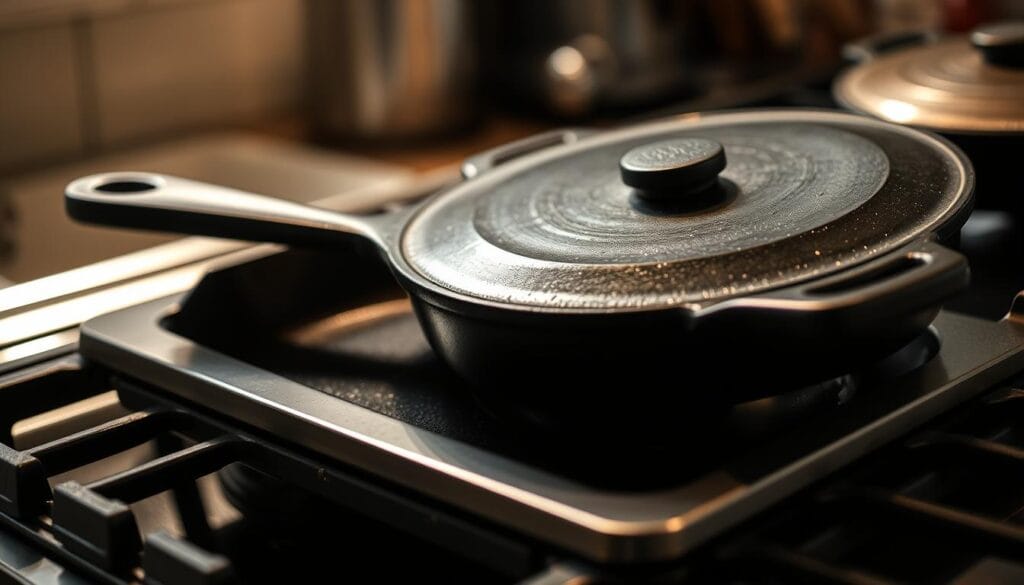
Skillets and Pans for Perfect Searing
For pan-searing thin steaks, a skillet or pan that retains heat well is essential. Cast iron or stainless steel pans are ideal for this purpose because they can achieve a high heat and maintain it, ensuring a perfect sear on your steak. When choosing a pan, consider one that is large enough to hold your steak comfortably without overcrowding, allowing for even cooking.
Grilling Tools for Thin Cuts
If you prefer grilling your thin steaks, having the right tools can make a significant difference. Here are some essential grilling tools for cooking thin cuts of meat:
* Long-handled tongs for precise control when flipping steaks on a hot grill.
* A flat-top griddle attachment for cooking multiple steaks simultaneously.
* An instant-read digital thermometer to prevent overcooking.
* Grill baskets for cooking very thin steak strips.
* A good grill brush for maintaining a clean cooking surface.
* Heat-resistant gloves for added protection when handling steaks over high heat.
10 Delicious Thin Steak Recipes
From classic dishes to innovative creations, thin steak recipes are a culinary delight. Whether you’re in the mood for something quick and simple or are looking to experiment with new flavors, thin steak is a versatile ingredient that can be prepared in countless ways. Here are some mouth-watering recipes to try.
Two-Minute Garlic Butter Sizzle Steaks
Indulge in the simplicity of a garlic butter steak recipe that’s ready in just two minutes. This dish is perfect for a quick weeknight dinner, combining the richness of butter and the pungency of garlic with the tenderness of thin steak.

Pan-Seared Thin Steak with Mushrooms and Onions
This recipe for thin steak with mushrooms and onions is a hearty and satisfying meal. The pan-searing technique locks in the flavors, creating a dish that’s both savory and aromatic.

Skillet Steak Fajitas
Skillet steak fajitas are a fun and flavorful way to enjoy thin steak. Sizzling with peppers and onions, this recipe is perfect for a lively dinner that’s sure to please.
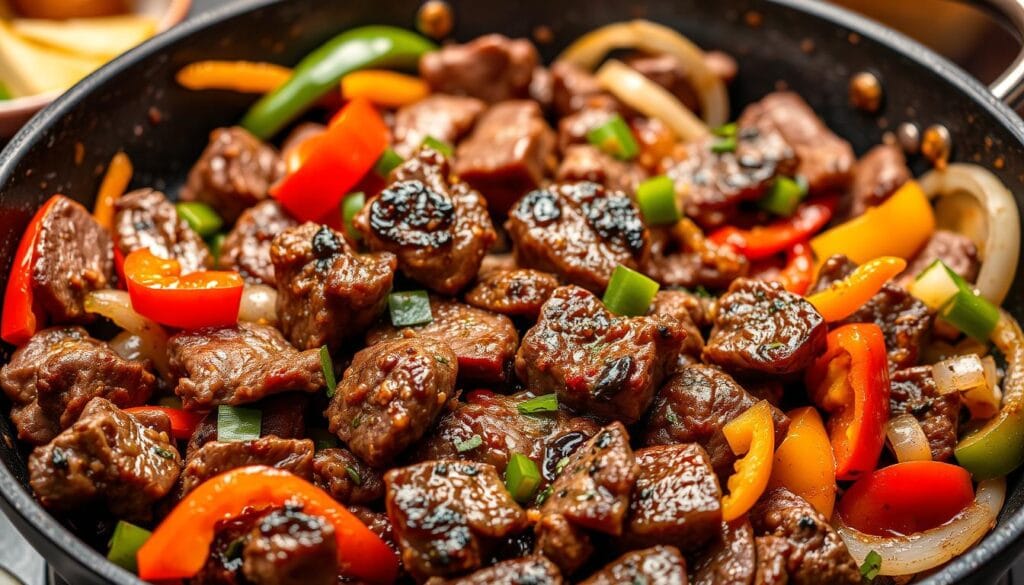
Fajita Lettuce Wraps – A Low-Carb Option
For a low-carb twist on traditional fajitas, try using lettuce wraps. This steak fajita lettuce wraps recipe is not only delicious but also healthier, making it a great option for those watching their carb intake.
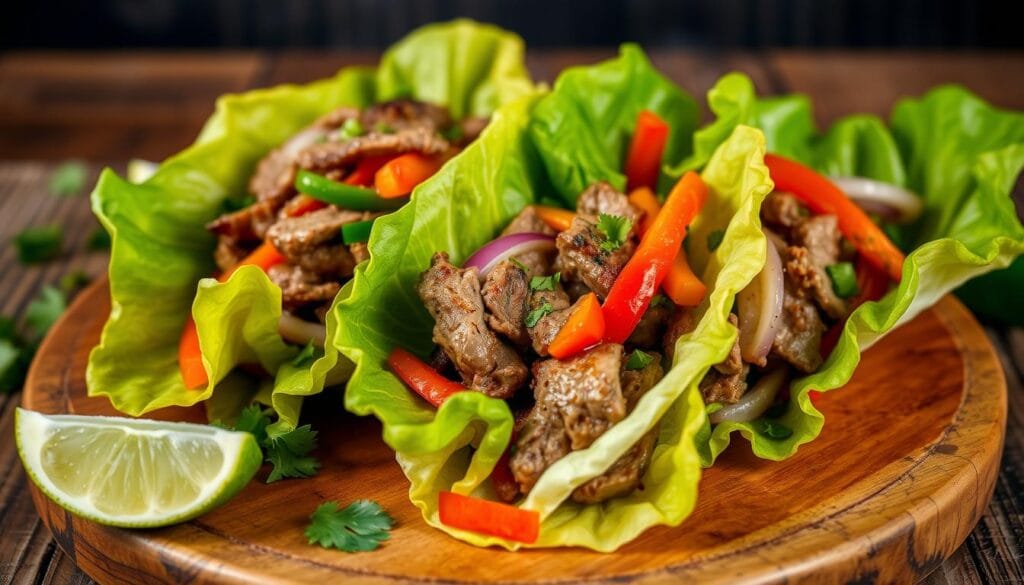
Classic Cheesesteak Sandwiches
A homemade cheesesteak sandwich recipe is a classic comfort food. Thinly sliced steak, melted cheese, and soft bread come together in a dish that’s both satisfying and indulgent.

Tender Chicken Fried Steak
While not made with beef, tender chicken fried steak is a delightful alternative. This recipe for tender chicken fried steak is crispy on the outside and tender on the inside, making it a crowd-pleaser.
Beef Schnitzel
Beef schnitzel is a breaded and fried cutlet that’s both crispy and juicy. This beef schnitzel recipe is a great way to enjoy thin steak in a new and exciting way.
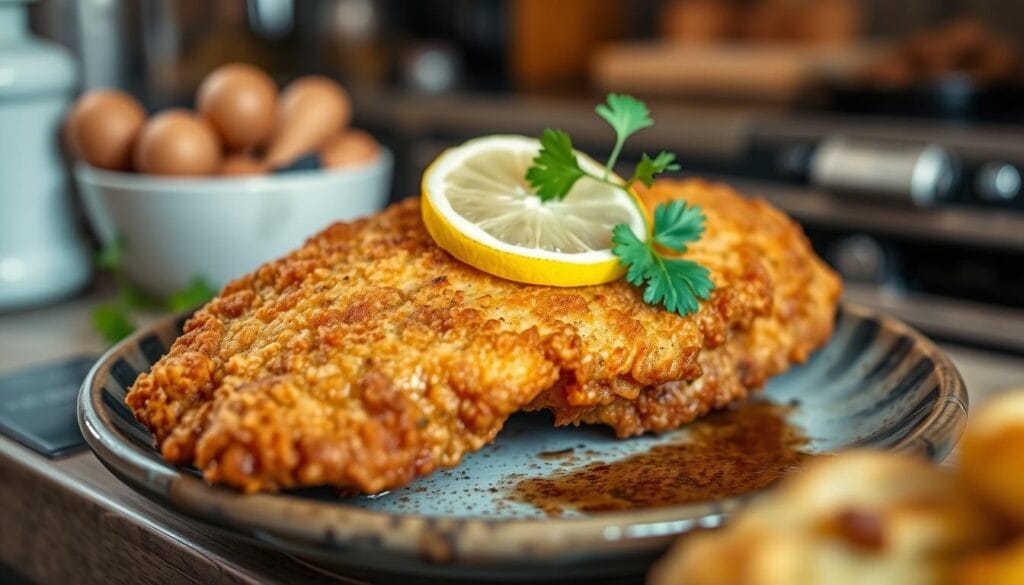
Carne Asada
Carne asada, or grilled beef, is a staple of Mexican cuisine. Using thin steak, this authentic carne asada recipe is marinated in a mixture of citrus juices, garlic, and spices, then grilled to perfection.

Asian-Inspired Thin Steak Dishes
Discover how to bring Asian flavors to your table with these easy thin steak dishes. Asian cuisine offers a wide range of flavors and techniques that can elevate thin steak recipes, making them perfect for a quick and delicious meal.
Healthy Mongolian Beef
Mongolian beef is a popular Chinese-American dish that features thinly sliced beef, typically cooked with vegetables in a savory sauce. To make a healthier version, you can use less oil and add more vegetables. The key to this dish is the sauce, made with soy sauce, garlic, and ginger, which gives it a rich and slightly sweet flavor.
In a small saucepan, heat 2 teaspoons of oil. Add minced garlic and ginger, and sauté for 30 seconds. Then, add soy sauce and brown sugar, bringing the mixture to a simmer. Whisk frequently over medium heat until the sauce thickens and achieves a glaze-like consistency, about 4 minutes.
Beef with Broccoli
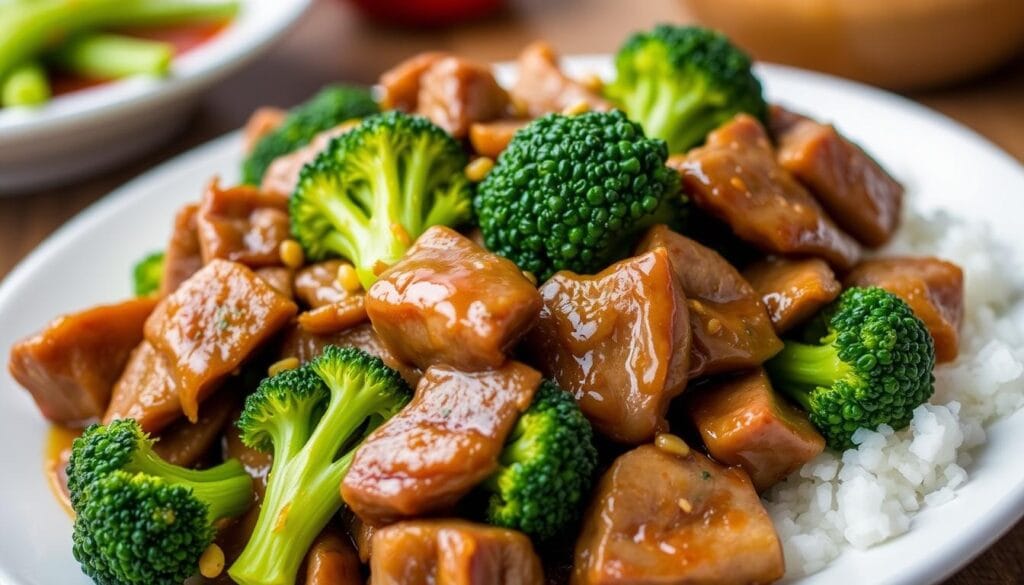
Beef with broccoli is a classic Chinese dish that pairs tender beef with crisp broccoli in a savory sauce. To make an authentic version, use high-quality ingredients and cook the beef and broccoli quickly over high heat to preserve their texture and flavor.
The sauce is a crucial component, typically made with soy sauce, oyster sauce (optional), and cornstarch to thicken. You can adjust the amount of garlic and ginger to your taste, and add other vegetables like bell peppers or carrots for added color and nutrition.
Szechuan Beef Stir Fry
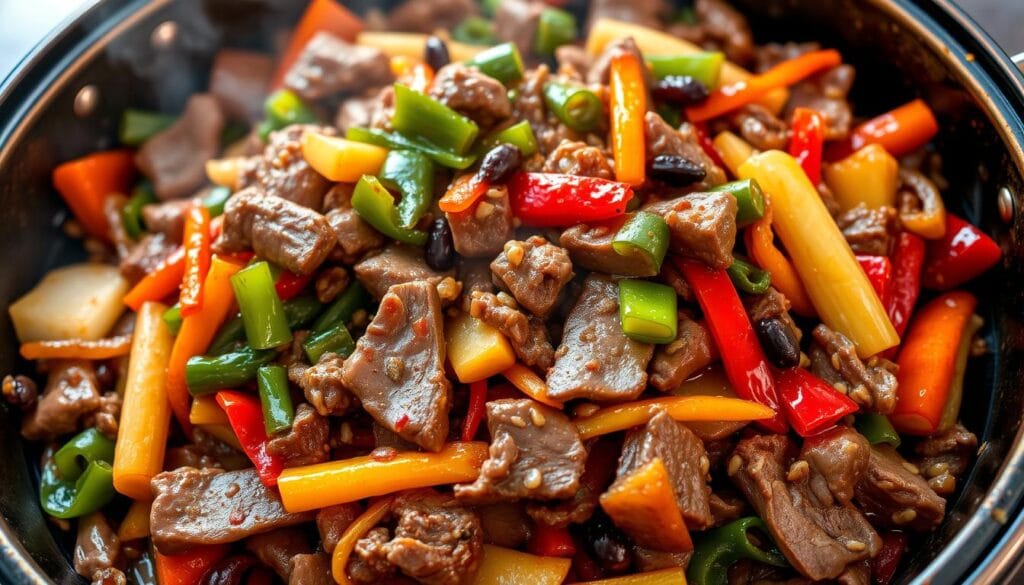
Szechuan beef stir-fry is known for its bold flavors and spicy kick, thanks to the use of Szechuan peppercorns and chili peppers. This dish is quick to make and can be customized with your favorite vegetables.
The key to a great Szechuan beef stir-fry is to cook the ingredients quickly over high heat, preserving their texture and flavor. Use a mixture of soy sauce, garlic, and ginger for the marinade, and add Szechuan peppercorns for an authentic flavor.
Korean-Style Thin Steak
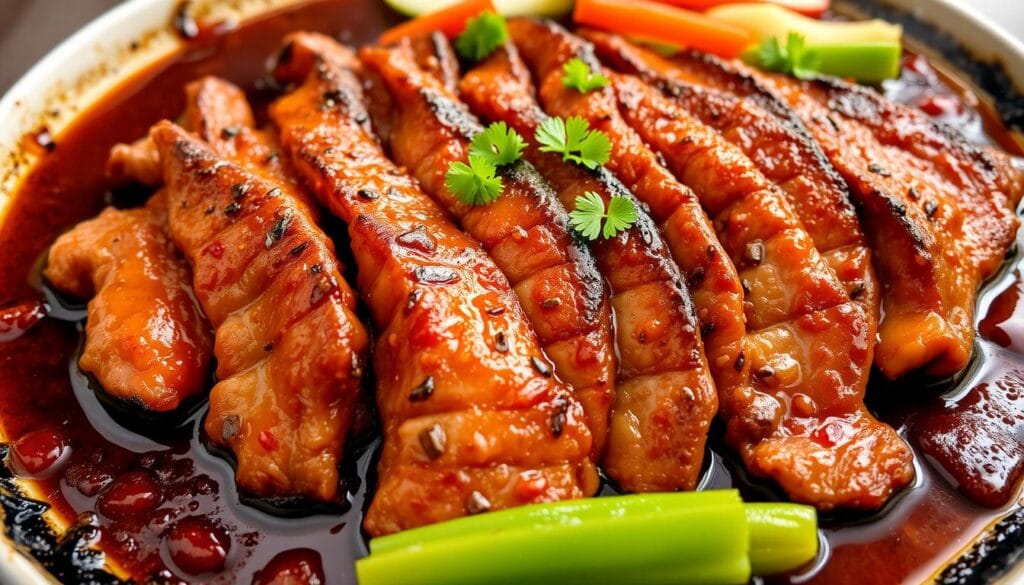
Korean-style thin steak, or bulgogi, features a distinctive sweet-savory marinade that caramelizes beautifully when cooked over high heat. The marinade typically includes soy sauce, brown sugar, garlic, ginger, and sesame oil, which both flavors and tenderizes the meat.
Paper-thin slices of beef absorb the marinade quickly and cook in just 2-3 minutes, making this an incredibly fast meal option. Traditional preparation involves grilling over charcoal, but you can achieve excellent results using a cast iron skillet or grill pan.
How to Cook Thin Steaks Like a Pro
The key to cooking exceptional thin steaks lies in mastering a few simple yet crucial techniques. Cooking thin steaks requires a different approach compared to thicker cuts, primarily due to their quick cooking time. To achieve perfection, it’s essential to understand the importance of high heat, proper seasoning, and precise cooking times.
Getting the Perfect Sear with High Heat
A high heat sear is crucial for developing the flavorful crust on a thin steak. To achieve this, preheat your skillet or grill pan until it’s almost smoking. Use a skillet that can retain high heat, such as cast iron, to get the best results. Once hot, add a small amount of oil to the pan before placing the steak. This technique ensures a beautiful crust forms quickly, locking in the juices.
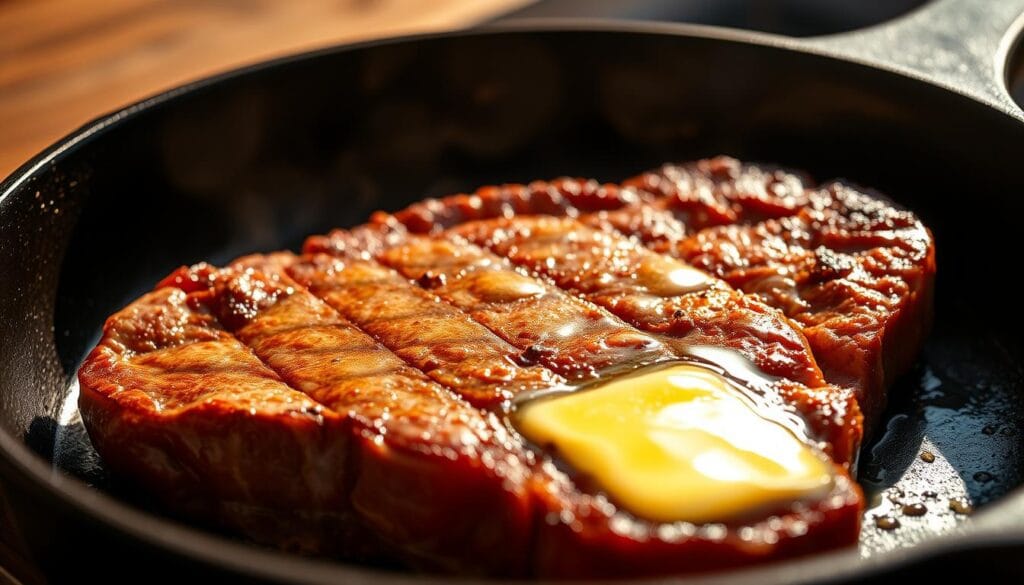
Using Oil to Prevent Sticking
Using the right oil can make a significant difference in preventing the steak from sticking to the pan. Choose an oil with a high smoke point, such as avocado or grapeseed oil, to ensure it doesn’t burn during the high heat searing process. Lightly brush the steak with oil on both sides before cooking to create a barrier between the meat and the pan.
- Avocado oil is ideal due to its high smoke point and mild flavor.
- Grapeseed oil is another good option, offering a light taste and high heat tolerance.
Resting and Slicing Across the Grain
After cooking, it’s crucial to let the steak rest for a minute or two. This allows the juices to redistribute, making the steak more tender and flavorful. When slicing, always cut across the grain to minimize chewiness and enhance the overall texture.
To slice correctly, identify the direction of the muscle fibers (the grain) and cut perpendicular to them. This technique ensures that your steak is as tender as possible.
Temperature Guidelines for Different Doneness Levels
Cooking thin steaks to the right doneness requires understanding their quick cooking nature. Since they cook rapidly, it’s essential to adjust traditional temperature guidelines. Remove the steak from heat 5-10°F before your target temperature to account for carryover cooking.
- For rare steaks (125-130°F), cook for as little as 45 seconds per side.
- Medium-rare (130-135°F) is achieved with slightly longer cooking times, maintaining juiciness.
- Medium doneness (140-145°F) requires about 90 seconds per side, depending on thickness and heat.
Using a rapid-read digital thermometer can provide the most accurate results. However, with practice, you can also judge doneness by touch and appearance, especially for steaks under ¼ inch thick.
The Perfect Thin Steak Marinades
The right marinade can transform a simple thin steak into a culinary masterpiece. Marinating is a process that not only adds flavor but also tenderizes the meat, making it more enjoyable to eat. By understanding the basics of marinating, you can elevate your thin steak dishes to new heights.
Basic Marinade Formula
A basic marinade typically consists of an acid (such as vinegar or citrus juice), oil, and seasonings. The acid helps to break down the proteins in the meat, while the oil adds moisture and flavor. You can customize your marinade by adding different seasonings and spices to suit your taste preferences. Don’t forget to add a sprinkle of salt pepper to enhance the flavor.
Flavor Profiles for Different Cuisines
Different cuisines offer a wide range of flavor profiles that can be used to marinate thin sliced steaks. For example, an Asian-inspired marinade might include soy sauce, ginger, and garlic, while a Latin American-style marinade could feature lime juice, cumin, and chili peppers. Experimenting with various flavor combinations can help you discover new favorite dishes.
Marinating Times and Techniques
When it comes to marinating beef or other thin steaks, timing is crucial. It’s recommended to marinate for at least an hour and not more than a day, with the ideal time being between 5 and 8 hours. Over-marinating can lead to tough meat due to the acid “cooking” it. For optimal results, consider marinating your steaks for 2-4 hours. Using zip-top bags can make the marinating process more efficient, and turning the steak occasionally ensures even flavor distribution.
Preparation Techniques for Tender Thin Steaks
To achieve tender thin steaks, it’s essential to employ the right preparation techniques. Proper preparation can make a significant difference in the tenderness and flavor of the steak. Two key methods to enhance tenderness are cross-hatching and tenderizing.
Cross-Hatching for Better Seasoning Absorption
Cross-hatching involves making shallow cuts on the surface of the meat in a diamond pattern. This technique helps in better absorption of seasonings and marinades, making the steak more flavorful. To cross-hatch, place the cut steak on a stable surface and carefully make diagonal cuts about 1/4 inch deep, first in one direction and then in the opposite direction.

Tenderizing Methods for Tougher Cuts
For tougher cuts of beef, tenderizing is a crucial step. Mechanical tenderizing through pounding is an effective method. You don’t necessarily need a meat mallet; a rolling pin or other flat tool can be used. Place the meat between two sheets of plastic wrap or parchment paper to prevent tearing and contain moisture. Use gentle, even strokes working from the center outward to achieve uniform thickness.
Alternatively, enzymatic tenderizers like papaya or pineapple can be used. These natural tenderizers can be incorporated into marinades. However, be cautious with the application time to avoid a mushy texture. For thin cuts, limit the application time to 30 minutes.
Pairing Side Dishes with Thin Steak Recipes
Pairing the perfect side dishes with your thin steak recipes can make all the difference in your dining experience. The right accompaniments not only complement the flavors of the steak but also add variety to the meal. Whether you’re looking for something light and refreshing or hearty and filling, there are numerous options to choose from.
Vegetable Sides
Vegetable sides are a great way to add some color and nutrients to your meal. You can opt for simple roasted vegetables like asparagus or Brussels sprouts, or go for something more elaborate like sautéed spinach with garlic. Garlic is a particularly good choice as it pairs well with the rich flavor of steak. Other options include grilled bell peppers or a fresh salad with a light vinaigrette.
Starch Accompaniments
Starch accompaniments like mashed potatoes, roasted sweet potatoes, or a simple rice pilaf can provide a satisfying contrast to the lean protein of the steak. For a more exotic flavor, consider serving your steak with garlic naan or a side of quinoa salad. These options not only fill you up but also add an interesting texture to the meal.
Sauces and Condiments
Sauces and condiments can elevate your thin steak to a whole new level. Quick pan sauces made from the fond left after cooking the steak are not only easy to make but also packed with flavor. You can also use compound butters mixed with herbs, garlic, or spices, which melt beautifully over the hot steak. Other options include pepper sauce, chimichurri, or a classic béarnaise. For added flavor, consider serving your steak with a sprinkle of flaky salt and a squeeze of lemon.
Choosing Quality Ingredients for the Best Results
The right ingredients can elevate your thin steak cooking to the next level. Whether you’re looking to enhance the flavor or texture, selecting the best components is crucial for a successful dish.
Selecting the Best Meat
When it comes to thin steaks, the quality of the meat is paramount. You can find quality thin steak at local butcher shops or high-end grocery stores. Consider looking for cuts labeled as “prime” or “choice” for the best flavor and tenderness.
For those wondering where to buy quality thin steak, specialty meat markets or online butcher services are excellent options. They often source their products from local farms, ensuring freshness and quality.
Fresh vs. Dried Herbs and Spices
The choice between fresh and dried herbs and spices can significantly impact your dish. Fresh herbs like cilantro, parsley, and basil provide bright, vibrant flavors that complement thin steaks without overwhelming their natural taste.
On the other hand, dried herbs work best when incorporated into marinades where they have time to rehydrate and release their essential oils into the liquid. Whole spices freshly ground just before use offer significantly more aromatic compounds than pre-ground versions, especially important for pepper.
Using low-sodium seasonings allows you to control salt levels precisely, which is important when working with thin steaks that absorb flavors quickly. Consider blooming dried spices in hot oil before adding other ingredients to release their full flavor potential in sauces and marinades.
Conclusion
By now, it’s clear that thin steak recipes can transform a simple meal into a gourmet experience. The versatility of thin steaks allows you to explore various global cuisines, from American classics to Asian favorites, making them perfect for busy weeknights when you crave a satisfying, protein-rich dinner without extensive preparation.
Mastering basic techniques such as high-heat cooking, proper resting, and slicing against the grain ensures tender, flavorful results regardless of the specific recipe. Experimenting with different marinades and preparation methods enables you to transform the same cut of beef into entirely different dining experiences.
The quality of ingredients, particularly the steak itself, significantly impacts the final result, justifying the investment in better meat when possible. Pairing your steaks with appropriate side dishes and accompaniments elevates the meal from a simple protein to a complete, balanced dinner worthy of any occasion.
With the techniques and recipes covered in this guide, you’re well-equipped to create restaurant-quality thin steak recipes in your own kitchen with confidence, making cooking a delightful experience.

